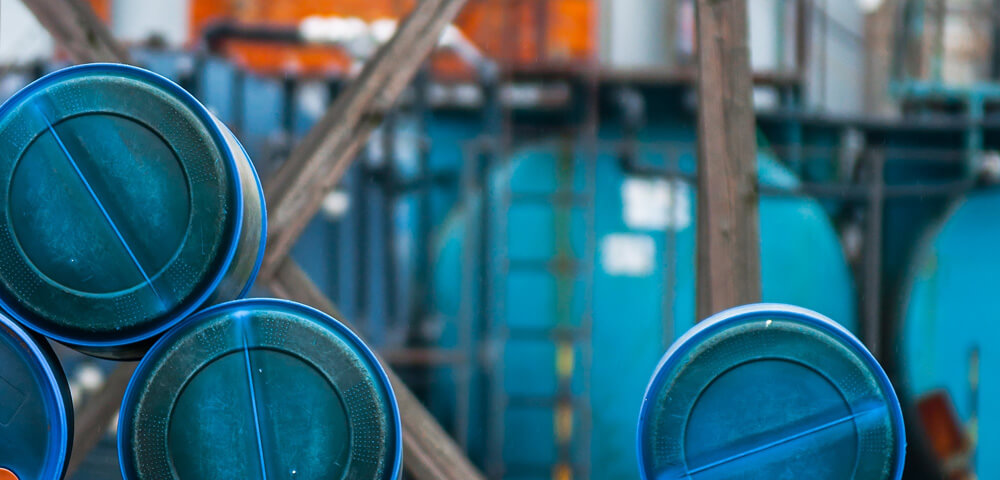Businesses that generate hazardous waste must manage that waste based on their specific generator type. Under the Resource Conservation and Recovery Act (RCRA), US EPA identifies three hazardous waste generators: Large Quantity Generators (LQG), Small Quantity Generators (SOG), and Conditionally Exempt Small Quantity Generators (CESQG). Businesses that fit one of these hazardous waste generator categories are required to follow specific regulations and protocols when it comes to collection, containment, and disposal of hazardous waste.
Large Quantity Generators (LQG)
LQGs typically generate 1,000 kilograms (approx. 2,200lbs) of hazardous waste per month or more than 1 kilogram (approx. 2.2lbs) of highly-toxic or acutely toxic hazardous waste per month. There is no limit to the amount of hazardous waste an LQG can accumulate on site, though any accumulated waste must be transported or disposed of within 90 days (some exceptions apply). Biennial hazardous waste reports must be submitted by LQGs in order to maintain compliance. Finally, any LQG operation must designate at least one employee as an acting emergency coordinator in case of emergency, and written contingency plans with detailed response measure must be prepared beforehand and be readily accessible to staff and inspectors.
Small Quantity Generators (SQG)
For SQGs, typical hazardous waste generation tends to stay between 100 kilograms and 1,000 kilograms per month. For SQGs, the onsite waste accumulation cannot exceed 6,000 kilograms, though accumulated waste without a permit can be maintained onsite for 180 days or 270 days if shipping of the hazardous waste would require transport over 200 miles. Like LQGs, SQGs must also have at least one employee acting as an emergency coordinator who is available at all times in case of an emergency. SQGs must also provide written contingency plans with detailed response measures available before an emergency transpires.
Conditionally Exempt Small Quantity Generators (CESQG)
Finally, CESQGs include any operation that generates 100 kilograms or less of hazardous waste per month, or 1 kilogram or less per month of acutely hazardous (highly toxic) waste. Unlike SQGs and LQGs, CESQGs cannot accumulate above 1,000 kilograms of waste over any period of time. In addition, CESQGs must always identify all hazardous waste at their facility. Finally, CESQGs must ensure that any hazardous waste sent off-premises is delivered to a third-party company, landfill, or treatment, storage, and disposal facility (TSDF) has the proper permits and licensing authorizing them to handle and dispose of hazardous materials.
Some Exceptions Apply
In addition to these federal classifications, most states and even some local regulatory agencies may have additional limits on the amount of waste that can be produced or stored at your location. Some states also have their own delineated groupings within these broad classifications, like Massachusetts’ “Very Small Quantity Generator (VSQG) classification, that sit somewhere in between the CESQG and SQG categories. Finally, bear in mind that each state can set their own regulations on hazardous waste storage and transportation requirements.
Rely on the Experts
Thanks to almost 30 years of experience in the waste management industry, MCF Environmental understands all the intricacies of hazardous waste disposal. Our knowledgeable staff, including drivers who’ve been with us for over 20 years, are well-versed in the federal, state, and local regulations governing the collection, treatment, and disposal of hazardous waste. We are familiar with all compliance requirements, and we follow all best practices for proper waste disposal, including certified drivers, ongoing training, and all necessary permits and insurance coverage.
Learn How MCF Environmental Helps Ensure You are in Compliance!


